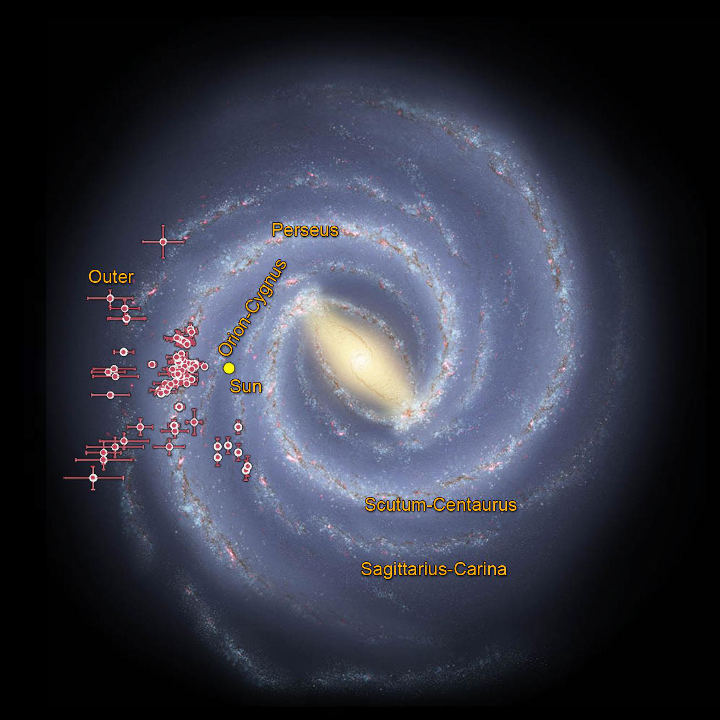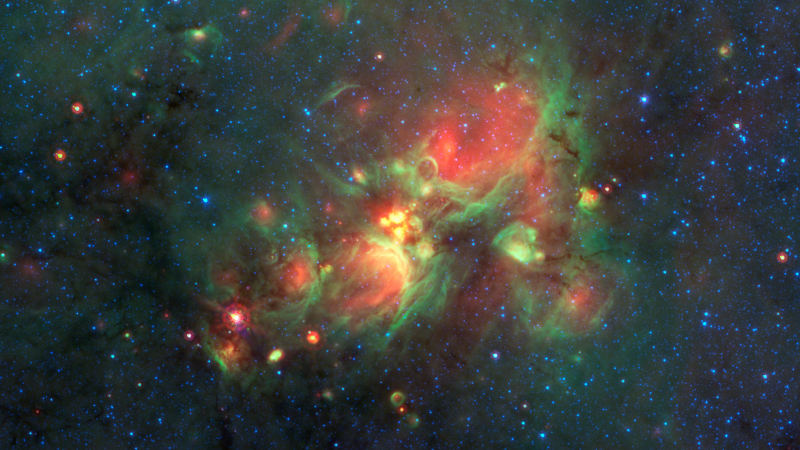
NASA’s Wide-field Infrared Survey Explorer (WISE) contributed data which helped astronomers and scientists put together this image of our Milky Way galaxy, in its very familiar spiral arms shape. Residing within the spiral arms are clusters of young stars that are shrouded in dust. These newly discovered stars are called embedded clusters.

